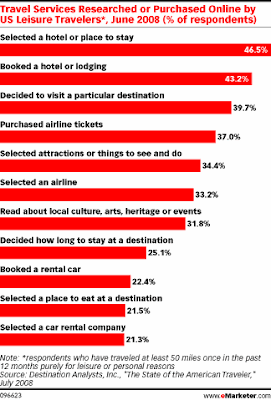A new study reveals that consumers in Australia and New Zealand are more likely to make online purchases than shoppers anywhere else in the world.
The study continued over a period of six months and looked at over 72 million online shopping sessions, specifically focusing on the habits of about one million ANZ users.
The research found a conversion rate of 4.4 purchases per 100 online sessions for Australia and New Zealand, which sits way above the global average of 2.96.
"The US and UK are thought to be the most tech-savvy, but the conversion rates suggest otherwise when it comes to e-commerce. US consumers tend to place 3.3 orders every 100 sessions, while the UK only place an average of 1.7."
"The significantly higher conversion rate of Aussies and Kiwis suggests consumers in the region are much more confident and comfortable with buying online than previously thought," said Kevin Mackin, general manager for Coremetrics ANZ, who conducted the study. The study also found that it is the companies utilising this enthusiasm for online shopping who are experiencing the most benefit.
Sites who provide online consumers with things like extra relevant content and third part recommendations are seeing higher pages views and longer visit times. Adding those little extras could prove to be extremely valuable to companies with an ANZ online customer base, as the study also found that consumers in the region spend a significant amount of time making purchase decisions.
"Another point to consider is that while Aussies are consistent with the average viewing time of 7.5 minutes per session, UK and US shoppers are making their decisions 1-1.5 minutes faster," said Mackin. "There’s strong reason to believe that this indicates a more considered online buying approach from ANZ consumers – an excellent reason to enhance the ‘stickiness’ of your site today." Mackin suggests that companies capitalize on ANZ customers’ tendency to stick around by not just focusing on how to attract visitors to the site, but to make sure they have a good experience once they get there.
"It seems that we’re only just beginning to think about search engine optimisation, when really we need to focus equally on engaging and retaining site visitors," he said. "It’s OK to attract them to your site but it’s what you do with visitors once they arrive that’s going to make or break the sale."
The study continued over a period of six months and looked at over 72 million online shopping sessions, specifically focusing on the habits of about one million ANZ users.
The research found a conversion rate of 4.4 purchases per 100 online sessions for Australia and New Zealand, which sits way above the global average of 2.96.
"The US and UK are thought to be the most tech-savvy, but the conversion rates suggest otherwise when it comes to e-commerce. US consumers tend to place 3.3 orders every 100 sessions, while the UK only place an average of 1.7."
"The significantly higher conversion rate of Aussies and Kiwis suggests consumers in the region are much more confident and comfortable with buying online than previously thought," said Kevin Mackin, general manager for Coremetrics ANZ, who conducted the study. The study also found that it is the companies utilising this enthusiasm for online shopping who are experiencing the most benefit.
Sites who provide online consumers with things like extra relevant content and third part recommendations are seeing higher pages views and longer visit times. Adding those little extras could prove to be extremely valuable to companies with an ANZ online customer base, as the study also found that consumers in the region spend a significant amount of time making purchase decisions.
"Another point to consider is that while Aussies are consistent with the average viewing time of 7.5 minutes per session, UK and US shoppers are making their decisions 1-1.5 minutes faster," said Mackin. "There’s strong reason to believe that this indicates a more considered online buying approach from ANZ consumers – an excellent reason to enhance the ‘stickiness’ of your site today." Mackin suggests that companies capitalize on ANZ customers’ tendency to stick around by not just focusing on how to attract visitors to the site, but to make sure they have a good experience once they get there.
"It seems that we’re only just beginning to think about search engine optimisation, when really we need to focus equally on engaging and retaining site visitors," he said. "It’s OK to attract them to your site but it’s what you do with visitors once they arrive that’s going to make or break the sale."





